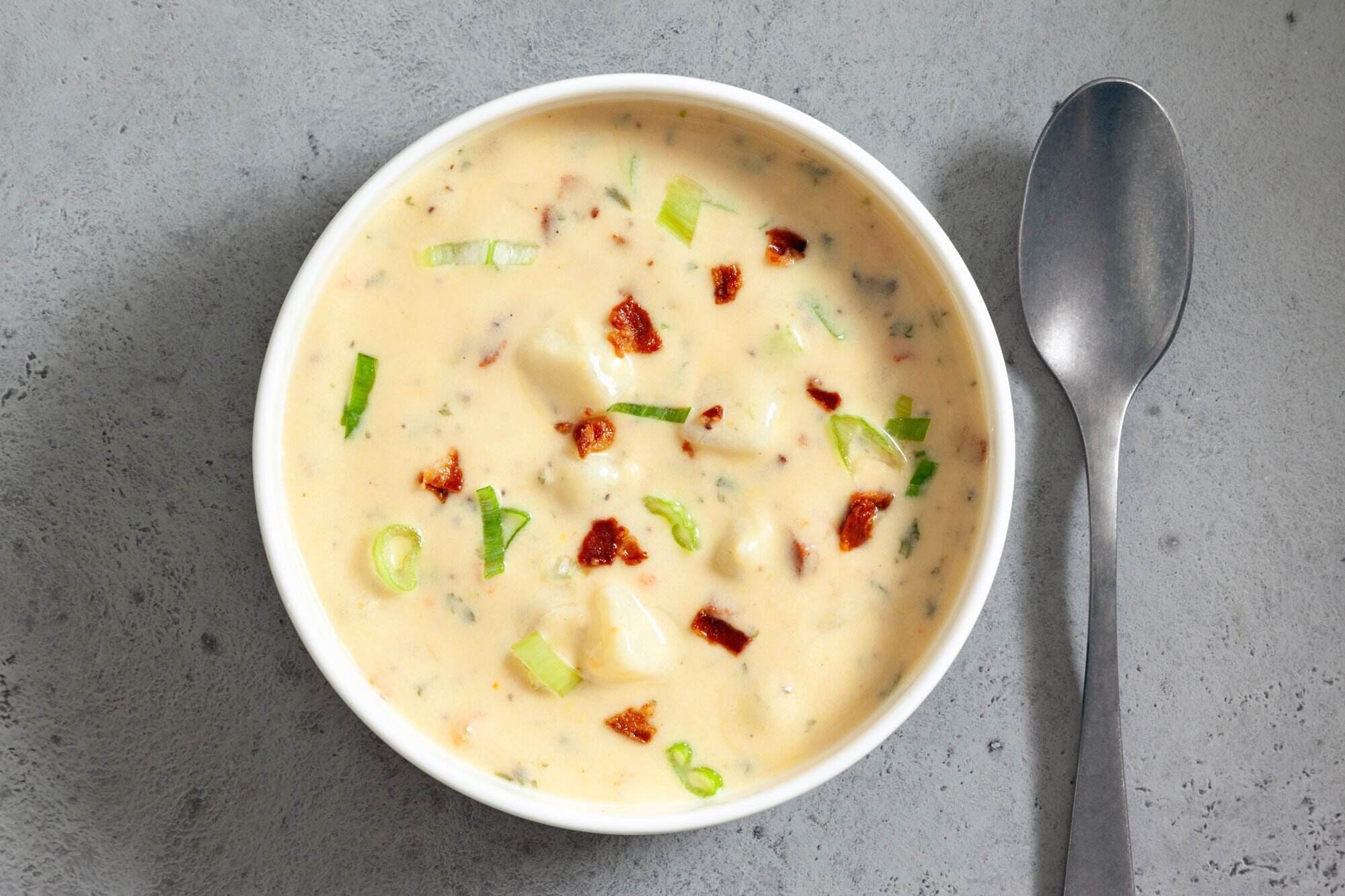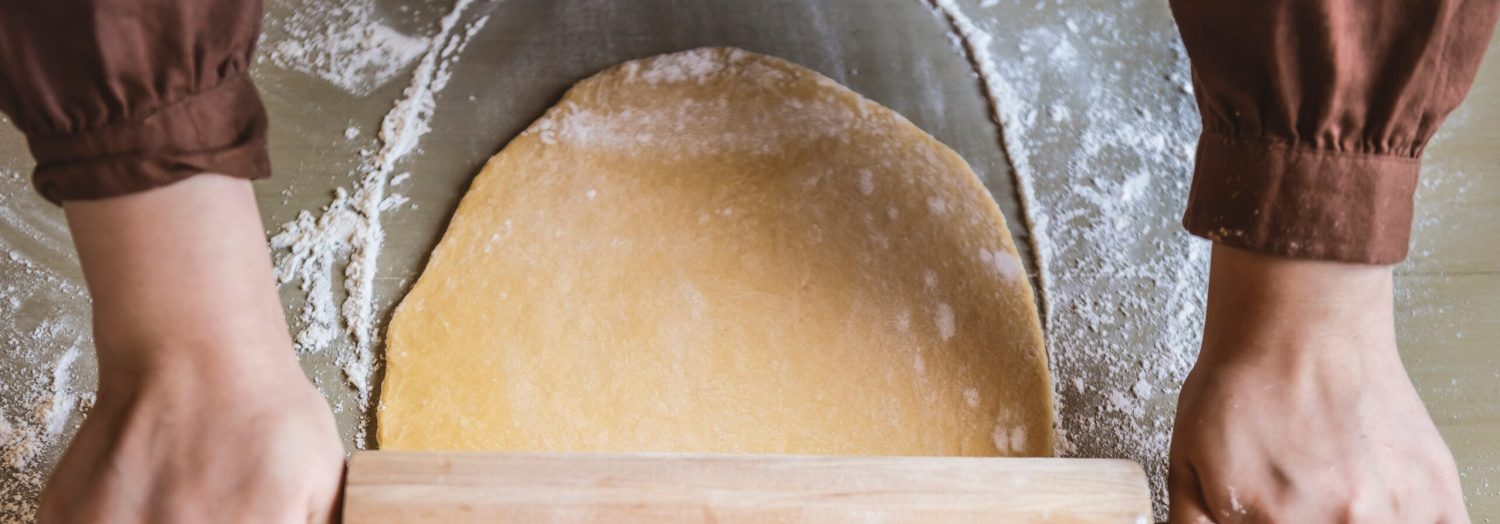This comforting potato soup is perfect for chilly days when you need something warm and hearty. With its creamy texture and rich flavor, it's a dish that will satisfy the whole family. Simple ingredients come together to create a delicious meal that’s both easy to make and incredibly satisfying.
Most of the ingredients for this potato soup are common pantry staples, but you might need to pick up a few items if you don't already have them. Heavy cream is essential for achieving the soup's creamy texture, and chicken broth adds depth to the flavor. Make sure to get fresh potatoes and onions for the best results.

Ingredients For Potato Soup Recipe
Potatoes: Peeled and diced, these form the base of the soup, providing a hearty and filling texture.
Onion: Chopped onions add a subtle sweetness and depth of flavor to the soup.
Chicken broth: This liquid base enhances the overall taste, making the soup rich and savory.
Heavy cream: Adds a luxurious creaminess to the soup, making it smooth and velvety.
Butter: Used to sauté the onions, adding a rich, buttery flavor.
Salt: Enhances the flavors of all the ingredients.
Pepper: Adds a touch of heat and complexity to the soup.
Technique Tip for This Recipe
When blending the soup, be sure to let it cool slightly before transferring it to the blender. Blending hot liquids can create pressure and cause the lid to pop off, leading to potential burns and a messy kitchen. Alternatively, you can use an immersion blender directly in the pot for a smoother and safer blending process.
Suggested Side Dishes
Alternative Ingredients
potatoes - Substitute with cauliflower: Cauliflower provides a similar texture and can be a lower-carb alternative.
potatoes - Substitute with sweet potatoes: Sweet potatoes add a different flavor profile and more nutrients.
onion - Substitute with leeks: Leeks offer a milder, sweeter flavor that complements soups well.
onion - Substitute with shallots: Shallots provide a more delicate and slightly sweeter taste.
chicken broth - Substitute with vegetable broth: Vegetable broth is a great vegetarian option and still provides a rich flavor.
chicken broth - Substitute with beef broth: Beef broth gives a deeper, more robust flavor to the soup.
heavy cream - Substitute with coconut milk: Coconut milk adds a creamy texture and a subtle coconut flavor, suitable for dairy-free diets.
heavy cream - Substitute with Greek yogurt: Greek yogurt provides creaminess and a slight tang, with added protein.
butter - Substitute with olive oil: Olive oil is a healthier fat option and adds a different but pleasant flavor.
butter - Substitute with ghee: Ghee offers a rich, nutty flavor and is lactose-free.
salt - Substitute with soy sauce: Soy sauce adds umami and saltiness, enhancing the soup's depth of flavor.
pepper - Substitute with white pepper: White pepper provides a milder heat and a slightly different flavor profile.
Alternative Recipes Similar to This Soup
How to Store or Freeze Your Soup
- Allow the potato soup to cool to room temperature before storing. This prevents condensation and helps maintain the soup's texture.
- Transfer the cooled soup into airtight containers. For portion control, consider using individual serving-sized containers.
- Label the containers with the date of preparation. This helps you keep track of how long the soup has been stored.
- Store the containers in the refrigerator if you plan to consume the soup within 3-4 days. Ensure the refrigerator is set to 40°F (4°C) or below.
- For longer storage, place the containers in the freezer. The soup can be frozen for up to 3 months. Make sure the freezer is set to 0°F (-18°C) or below.
- When ready to reheat, thaw frozen soup in the refrigerator overnight. This gradual thawing helps maintain the soup's consistency.
- Reheat the soup on the stovetop over medium heat, stirring occasionally to ensure even heating. Add a splash of chicken broth or heavy cream if the soup appears too thick.
- Alternatively, reheat in the microwave. Use a microwave-safe bowl, cover loosely, and heat in 1-2 minute intervals, stirring in between, until the soup is hot throughout.
- Avoid reheating the soup multiple times, as this can affect the flavor and texture. Only reheat the portion you plan to consume.
- Garnish with fresh herbs or a dollop of sour cream before serving to enhance the flavor and presentation.
How to Reheat Leftovers
Stovetop Method:
- Pour the potato soup into a saucepan.
- Heat over medium-low heat, stirring occasionally to prevent sticking.
- Once the soup is heated through and reaches your desired temperature, serve hot.
Microwave Method:
- Transfer the potato soup to a microwave-safe bowl.
- Cover the bowl with a microwave-safe lid or plate to prevent splatters.
- Heat on high for 1-2 minutes, then stir.
- Continue heating in 30-second intervals, stirring in between, until the soup is hot.
Double Boiler Method:
- Fill the bottom pot of a double boiler with water and bring it to a simmer.
- Place the potato soup in the top pot.
- Stir occasionally until the soup is heated through.
Slow Cooker Method:
- Pour the potato soup into the slow cooker.
- Set the slow cooker to low heat.
- Heat for 1-2 hours, stirring occasionally, until the soup is hot.
Oven Method:
- Preheat your oven to 350°F (175°C).
- Transfer the potato soup to an oven-safe dish.
- Cover the dish with aluminum foil to prevent drying out.
- Heat for 20-30 minutes, or until the soup is hot, stirring halfway through.
Sous Vide Method:
- Place the potato soup in a vacuum-sealed bag or a resealable plastic bag with the air removed.
- Set your sous vide machine to 165°F (74°C).
- Submerge the bag in the water bath and heat for about 30 minutes, or until the soup is hot.
Essential Tools for Making This Soup
Large pot: Used to melt the butter and cook the soup ingredients together.
Wooden spoon: Ideal for stirring the onions and other ingredients without scratching the pot.
Blender: Necessary for pureeing the soup to achieve a smooth consistency.
Knife: Essential for chopping the onions and dicing the potatoes.
Cutting board: Provides a safe surface for chopping and dicing vegetables.
Measuring cups: Used to measure the precise amounts of potatoes, chicken broth, and heavy cream.
Measuring spoons: Useful for measuring the butter and any additional seasonings.
Ladle: Perfect for serving the hot soup into bowls.
How to Save Time on This Recipe
Prep ingredients ahead: Peel and dice the potatoes and chop the onions the night before to save time.
Use pre-made broth: Opt for store-bought chicken broth to skip the step of making it from scratch.
Quick blending: Use an immersion blender directly in the pot to puree the soup and save on cleanup time.
Simmer with lid: Cover the pot while simmering to cook the potatoes faster.
Pre-measure seasonings: Measure out the salt and pepper in advance to streamline the final steps.

Potato Soup Recipe
Ingredients
Main Ingredients
- 4 cups Potatoes, peeled and diced
- 1 cup Onion, chopped
- 4 cups Chicken broth
- 1 cup Heavy cream
- 2 tablespoon Butter
- to taste Salt and pepper
Instructions
- 1. In a large pot, melt the butter over medium heat.
- 2. Add the chopped onions and cook until translucent.
- 3. Add the diced potatoes and chicken broth. Bring to a boil.
- 4. Reduce heat and simmer until potatoes are tender, about 20 minutes.
- 5. Use a blender to puree the soup until smooth.
- 6. Stir in the heavy cream and season with salt and pepper to taste.
- 7. Serve hot and enjoy!
Nutritional Value
Keywords
Suggested Appetizers and Desserts
More Amazing Recipes to Try 🙂
- Slow Cooker Chili Recipe8 Hours 15 Minutes
- Summer Squash Bread Recipe1 Hours 15 Minutes
- Apple Cider Recipe40 Minutes
- Watermelon Lemonade Recipe10 Minutes
- Electric Lemonade Recipe10 Minutes
- Turkey Wraps Recipe10 Minutes
- Fresh Banana Daiquiri Recipe10 Minutes
- Cosmopolitan Recipe5 Minutes

Leave a Reply